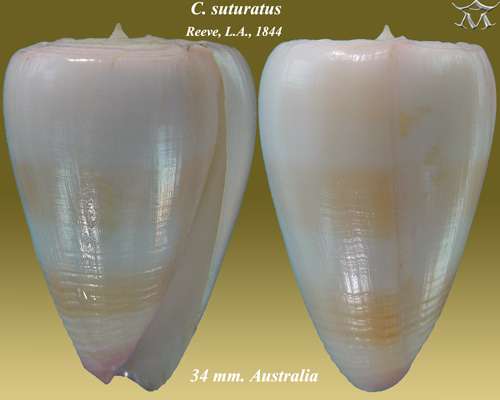July 8, 2015 report
Study shows defensive poison in cone snails repurposed for use in catching fish

(Phys.org)—A team of researchers with Australia's University of Queensland has found that a toxin produced by a species of cone snail appears to have evolved from a defensive purpose to an offensive weapon. In their paper published in Proceedings of the Royal Society B, the group describes their study of conotoxins in Conus suturatus and why their results indicate an evolutionary shift occurred for the species.
Among the many creatures that exist today, many have toxic weapons—some for defending themselves, others for stunning or killing prey. And some, such as C. suturatus, have both. It likely comes as a surprise to many, to discover that some cone snails are one of the deadliest creatures around, a single sting can kill a grown man within minutes. But how did a simple, slow snail evolve to have such a weapon? That is what the researchers with this new effort sought to learn.
Cone snail venom, the researchers explain, is made mostly of peptides called conotoxins—it causes harm to other creatures after a harpoon-like appendage is jammed into a victim's body followed by an injection of the venom, which almost instantaneously impacts muscles and nerves. Different species of cone snails have different types of conotoxins—they have evolved to target a certain enemy or prey. Recent prior research has also found that many species of the snails actually produce two different types conotoxins, one for defense, one for offense—the toxins are produced at one end or the other of a venom duct. It is also known that toxins used as an offensive weapon fall into two types of categories, those that are meant to stun (d-conotoxins, typically found in snails that hunt fast moving fish) and those that are meant to kill.
In this new effort, the researchers noted that cone snails that target slow moving prey would have no need for d-conotoxins—if it did exist in a species that would be an indicator that it had evolved from a defensive tool to an offensive weapon. Suspecting that to be the case with C. suturatus, the researchers conducted a genetic and proteomic analysis of some samples, and found their suspicions confirmed. They also noted that the d-conotoxins were found on the end of the venom duct normally used to produce defensive toxin—testing with mice indicated the toxins produced intense pain in victims.
Taken together, the evidence points to an evolutionary shift for the snails, the researchers suggest, from producing a toxin to defend itself, to creating a toxin that would allow for capturing (via stunning) and eating passing fish.
More information: δ-Conotoxin SuVIA suggests an evolutionary link between ancestral predator defence and the origin of fish-hunting behaviour in carnivorous cone snails, Proceedings of the Royal Society B, Published 8 July 2015.DOI: 10.1098/rspb.2015.0817
Abstract
Some venomous cone snails feed on small fishes using an immobilizing combination of synergistic venom peptides that target Kv and Nav channels. As part of this envenomation strategy, δ-conotoxins are potent ichtyotoxins that enhance Nav channel function. δ-Conotoxins belong to an ancient and widely distributed gene superfamily, but any evolutionary link from ancestral worm-eating cone snails to modern piscivorous species has not been elucidated. Here, we report the discovery of SuVIA, a potent vertebrate-active δ-conotoxin characterized from a vermivorous cone snail (Conus suturatus). SuVIA is equipotent at hNaV1.3, hNaV1.4 and hNaV1.6 with EC50s in the low nanomolar range. SuVIA also increased peak hNaV1.7 current by approximately 75% and shifted the voltage-dependence of activation to more hyperpolarized potentials from –15 mV to –25 mV, with little effect on the voltage-dependence of inactivation. Interestingly, the proximal venom gland expression and pain-inducing effect of SuVIA in mammals suggest that δ-conotoxins in vermivorous cone snails play a defensive role against higher order vertebrates. We propose that δ-conotoxins originally evolved in ancestral vermivorous cones to defend against larger predators including fishes have been repurposed to facilitate a shift to piscivorous behaviour, suggesting an unexpected underlying mechanism for this remarkable evolutionary transition.
Journal information: Proceedings of the Royal Society B
© 2015 Phys.org


















